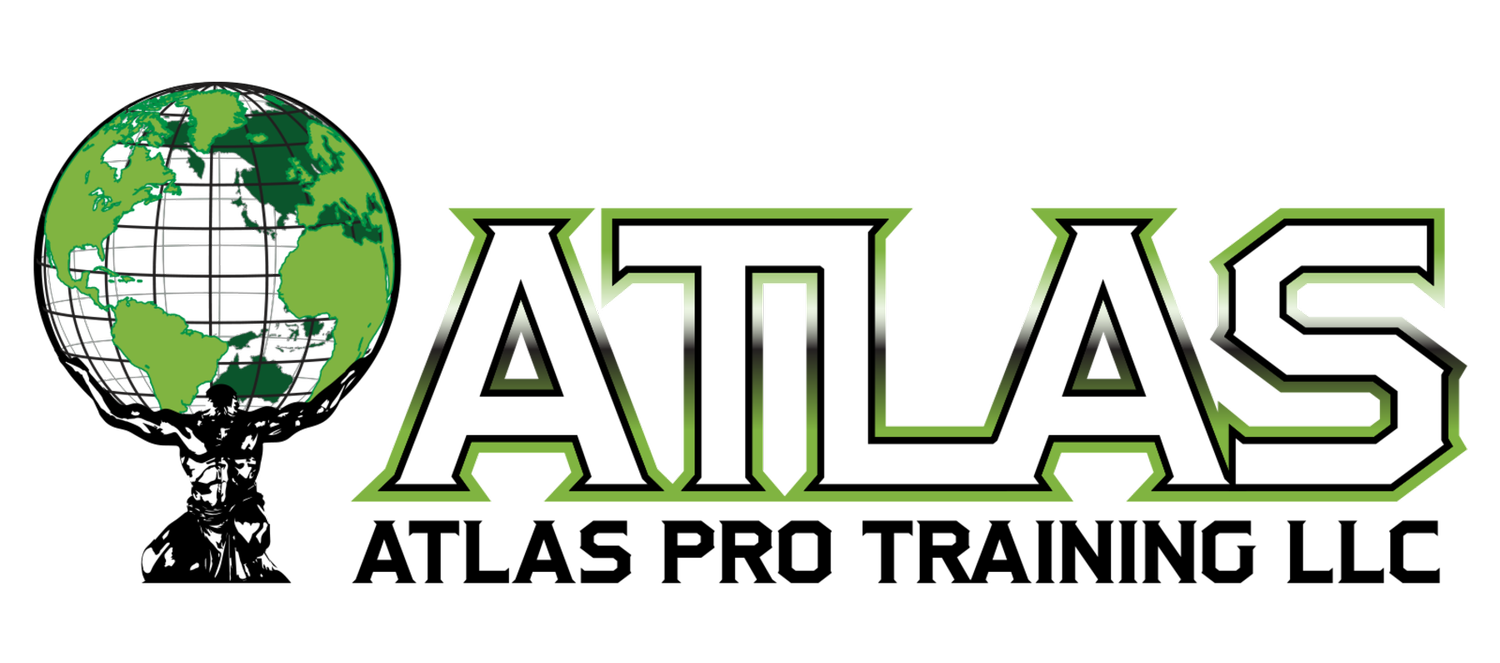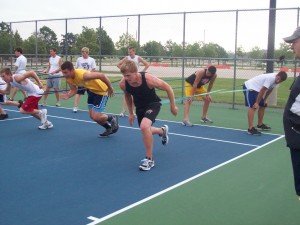
Powering Through: Energy System Development for Peak Stamina in Field Sports and Court Play
In the arena of sports, endurance is the unsung hero that fuels athletes through grueling matches and competitions. Whether it's the endless sprints of soccer, the relentless running of basketball, or the ceaseless pursuits of field sports, stamina is the key to success. At Atlas Performance Training, we understand the significance of cardiovascular endurance in these sports. In this blog post, we'll stress its importance, provide specific training methods and coaching principles for improving energy system development, and discuss how sport-specific endurance training can elevate an athlete's stamina and energy systems.
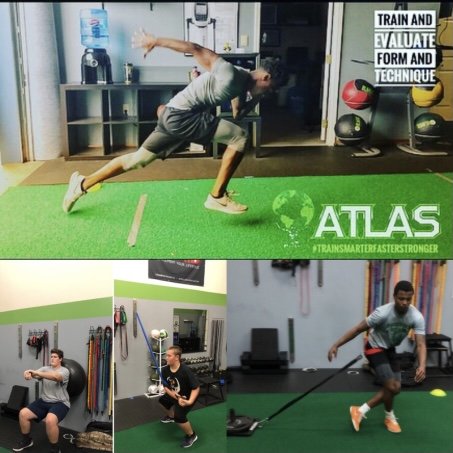
Neuromuscular Mastery: The Key to Youth Athletic Development
In the pursuit of athletic excellence, youth athletes face a unique challenge: harnessing the power of neuromuscular adaptation. At Atlas Performance Training, we recognize that this neurological phenomenon is the cornerstone of athletic development. In this blog post, we'll explore the vital importance of neuromuscular adaptation in young athletes, the training methods and principles that drive this process, and the life-changing outcomes it brings to those who embrace it, as well as the potential negative consequences for those who neglect it.
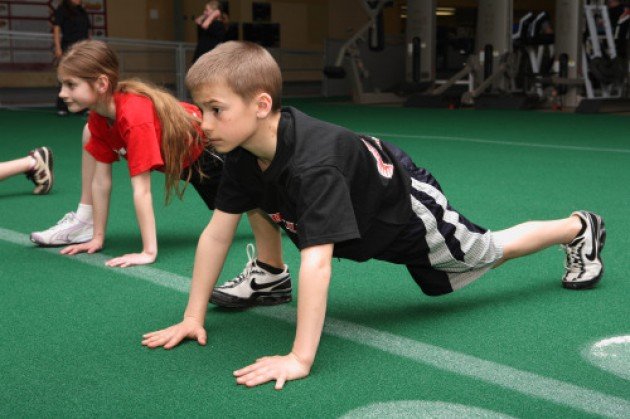
The Importance of Joint Mobility for Injury Prevention for Youth Athletes
As a health and performance coach dedicated to nurturing the potential of young athletes, we understand that their well-being is paramount. One of the key elements that often goes unnoticed but plays a critical role in their journey to success is joint mobility. In this blog, we will delve into why joint mobility is not just an option but a necessity for young athletes, discuss common joint-related injuries in youth sports, provide practical exercises and routines to enhance joint mobility, and highlight how this can significantly reduce the risk of injuries such as ACL tears, High Ankle sprains, Hip injuries, and Shoulder injuries.

Crafting Champions: Age-Appropriate Training for Adolescent Athletes
Adolescence is a crucial phase in a young athlete's journey towards excellence. At Atlas Performance Training, we understand that training during this period should be as unique as the athletes themselves. In this blog post, we'll explore the importance of age-appropriate training for adolescents, focusing on their physical and mental development. We'll also showcase our 11 years of expertise in tailoring coaching to the specific needs of youth athletes on their Long Term Athletic Development (LTAD) journey.

The Unwritten Rules of the Gym
Navigating the gym can be intimidating, especially if you're new to the fitness scene. Understanding the unwritten rules of the gym can help you feel more comfortable and ensure a positive experience.

The Power of Lifting Weights: A Personal Journey
Ever wondered why people get into lifting weights? It's a question that often reflects personal stories of transformation and empowerment. Let's explore the profound reasons behind my Journey lifting weights. Understanding the motivations behind weightlifting can be a mystery to those who haven't experienced its benefits firsthand.

Should Tall People Do Deadlifts? Is it Bad for Their Backs?
Deadlifts are often hailed as one of the most effective full-body strength exercises, but there's a common question that tall individuals frequently ask: Should tall people do deadlifts, and is it potentially harmful to their backs? We'll address this concern and provide a solution, explaining how Atlas Performance Training can ensure safe and effective deadlifting for individuals of all heights.

Why are dips harder than push-ups?
Dips and push-ups are both bodyweight exercises that are often used to build upper body strength. However, many individuals find dips to be significantly harder than push-ups. Understanding why and determining which exercise is more productive is essential for your fitness journey.

Weightlifting at a Young Age: Pros, Cons, and the Right Approach
The appropriate age for a child to begin a weightlifting program is generally around 7-8 years old. However, it's crucial to note that this age can vary based on individual factors, including physical maturity, emotional readiness, and proper supervision. Children should only engage in weightlifting under the guidance of qualified coaches who specialize in youth training.

Mastering the Game: Balancing Skill and Strength in Youth Athletic Development
In the world of youth sports, success isn't just about perfecting a jump shot or scoring a goal; it's also about building a solid foundation of physical strength and stability. At Atlas Performance Training, we recognize the importance of striking a delicate balance between honing sports skills and developing physical prowess. In this blog post, we'll explore the top five ways athletes benefit from this holistic approach to training and how it plays a crucial role in injury prevention.

Progressive Overload in Strength Training for High School and Middle School Athletes
Progressive overload is a fundamental concept in strength training that plays a crucial role in enhancing athletic performance, regardless of an athlete's age. For high school and middle school athletes, understanding and implementing progressive overload can be a game-changer. In this blog post, we'll explore the concept of progressive overload, its positive effects on athletic performance, and provide practical strategies for young athletes to safely and effectively incorporate it into their training routines. Additionally, we'll highlight the critical role of consistency in achieving strength gains.
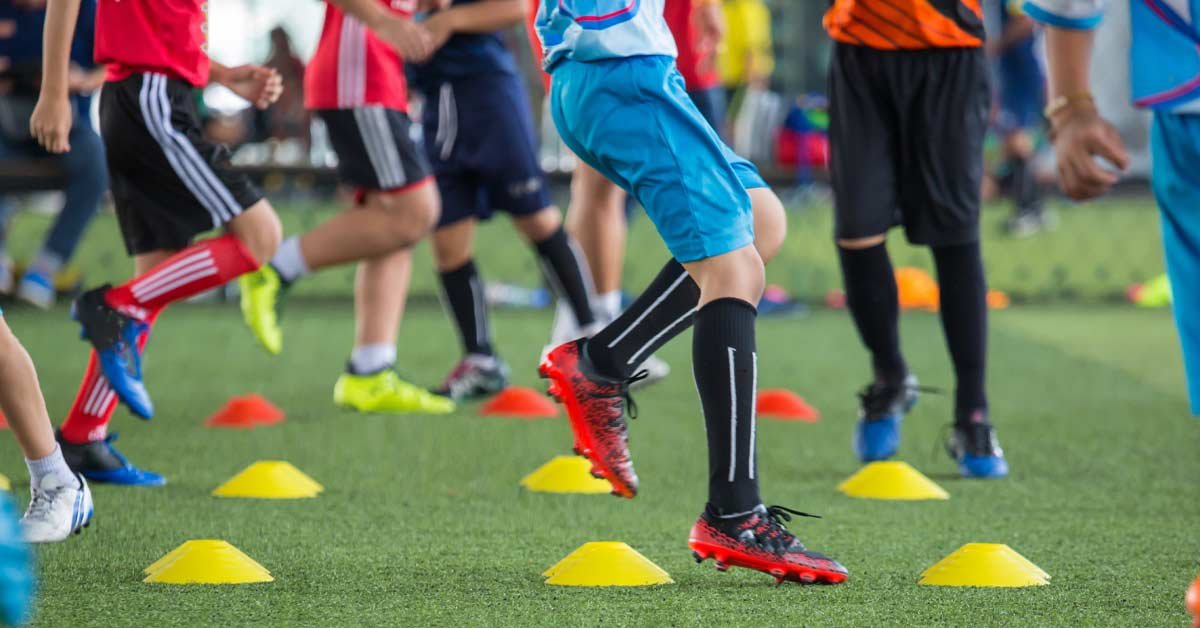
Building Champions: Periodization and Progression in Youth Athletic Development
Youth sports are more than just games; they are a journey of growth, development, and achievement. At Atlas Performance Training, we recognize that the path to athletic excellence involves careful planning and structured training. In this blog post, we'll delve into the concept of periodization and its critical relevance in youth sports. We'll also explore periodized strategies for developing the athletic abilities of young athletes and the transformative outcomes achieved through this structured approach.

Lifting Up Young Athletes: Power, Precision, and Performance
Weightlifting, when introduced correctly, can be a valuable component of a well-rounded training program for youth athletes aged 12-17. Emphasizing movement proficiency over heavy weights is paramount in this age group, as it ensures safety and maximizes strength development. In this blog post, we will discuss the importance of introducing weightlifting to young athletes with a focus on proper techniques, injury prevention, and how weightlifting contributes to functional strength and improved athletic performance.

Specific Health and Performance Training For Athletic Development
All great gains and achievements on the field and or court of play are made possible when athletes chose to dedicate themselves to the process of developing the work ethic needed to achieve their goals in the offseason, and between seasons if they are multi-sport athletes to compete and win in the regular and post-season. The four areas of focus mentioned above should be the foundation of any comprehensive training program. There may be other elements that could be included but for the sake of time, I chose to focus on these 4 elements that have shown results for my clients over the years. Let’s also keep in mind that this process is for the long-term growth and development of the athlete and there is no such thing as a quick and easy path to improving the physical and mental development of a youth athlete. Any youth training program should have the long-term development of the athlete in mind, and address all areas that will improve their physical and mental performance…..

The New and Old Smarter Cardio Training of the 21st Century....
The goal of any training program should be to develop these energy systems and “train” them to produce the energy in an efficient manner during practice and competition so that energy is readily available to the muscles during physical activity. All three energy systems are interdependent of each other, but in most situations, one energy system or a combination of two of the three is required to make things happen. This goes into the concept of performance-specific training and how to create training programs that are designed specifically to produce improvements in muscular endurance, cardiovascular fitness, and improvements in speed and power of the individual….

Build a Stronger Kid: Lift and Learn
There is an age old question that goes back as far as I can remember, I tried to find out where or who came up with this myth and google failed to give me the definitive answer. But that is not important, what is important is that we are going to look at the benefits of learning to lift by briefly looking at the process of LEARNING to lift weights, which is based on two important principles. The first principle is developing the young person’s Relative muscular strength, which learning to perform basic bodyweight movements like a push-up, bodyweight squat, and lunge Pull-Ups, etc. with proper form and body control. In developing youth strength training programs for beginners exercises should in my opinion be limited to the use of specific types of resistance equipment like dumbbells, rubber bands, and tubes, with minimal intensity (lightweight) after they have learned how to properly execute the basic exercises that improve their Relative muscular strength. Developing relative strength varies and depends on the commitment of the individual youth, and their parents. After a solid foundation of relative strength has been developed, start developing their Absolute muscular Strength. This is when Free weights and resistance machines are added to the training program, examples of Free weight movements are……
